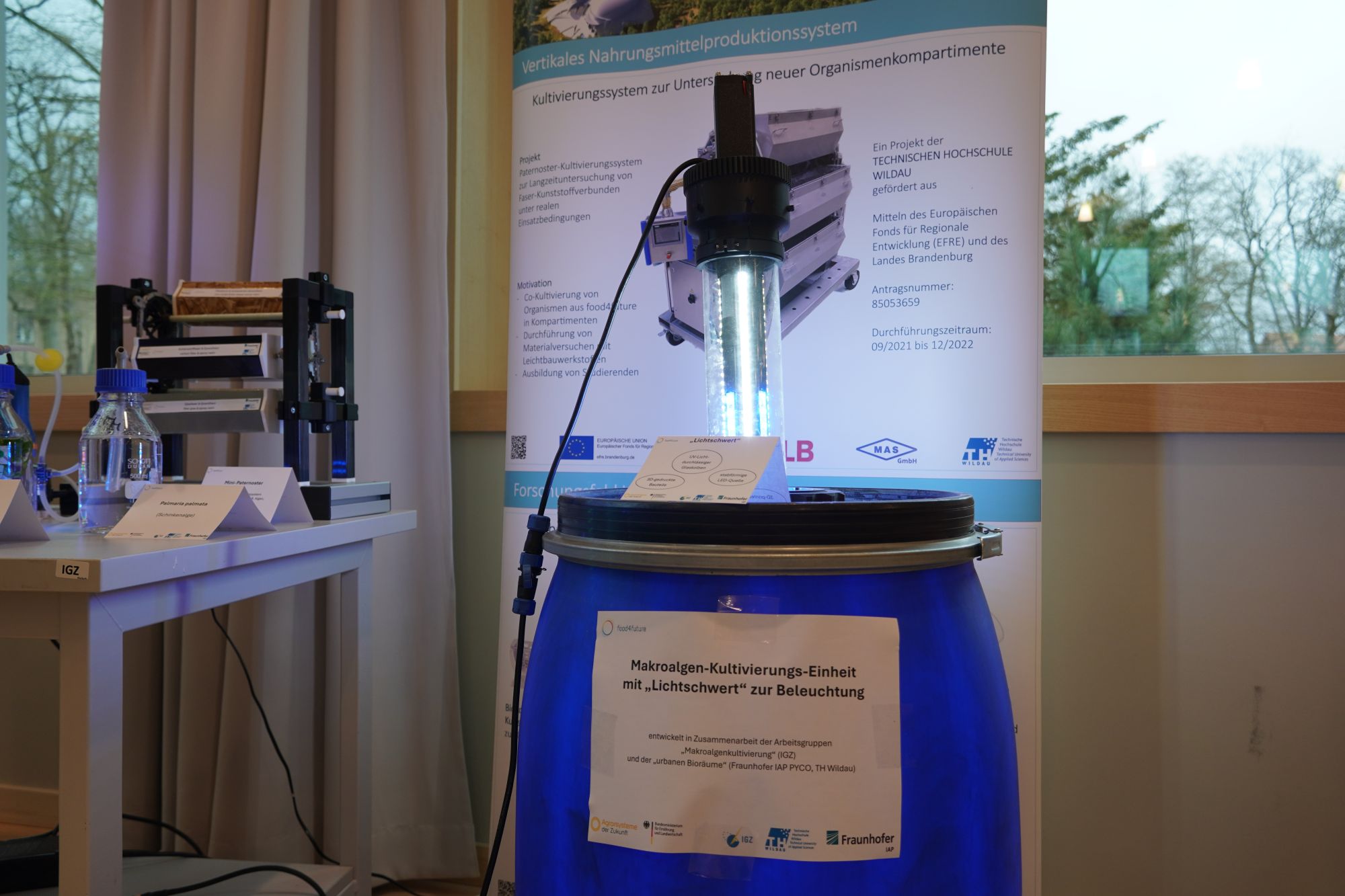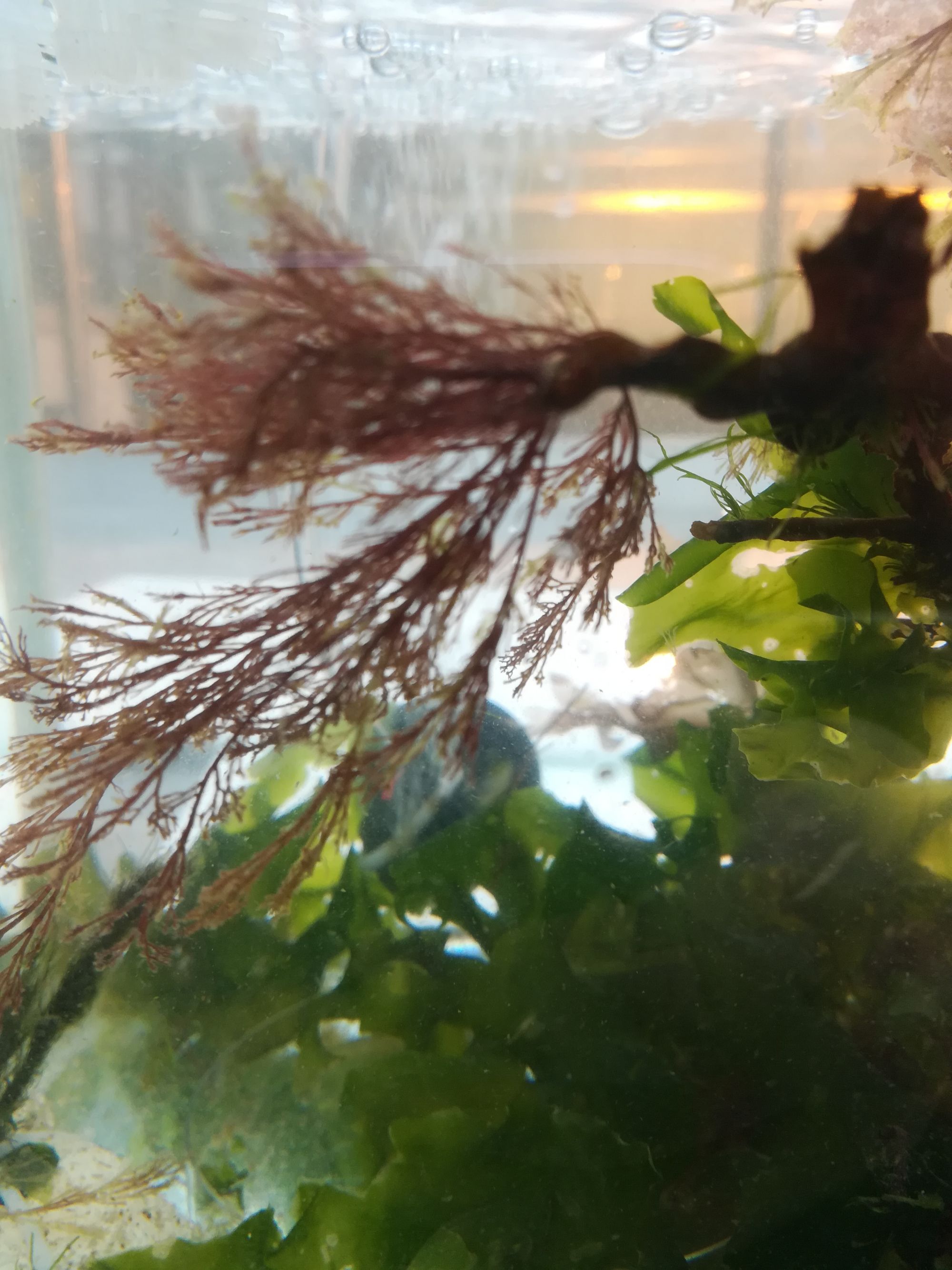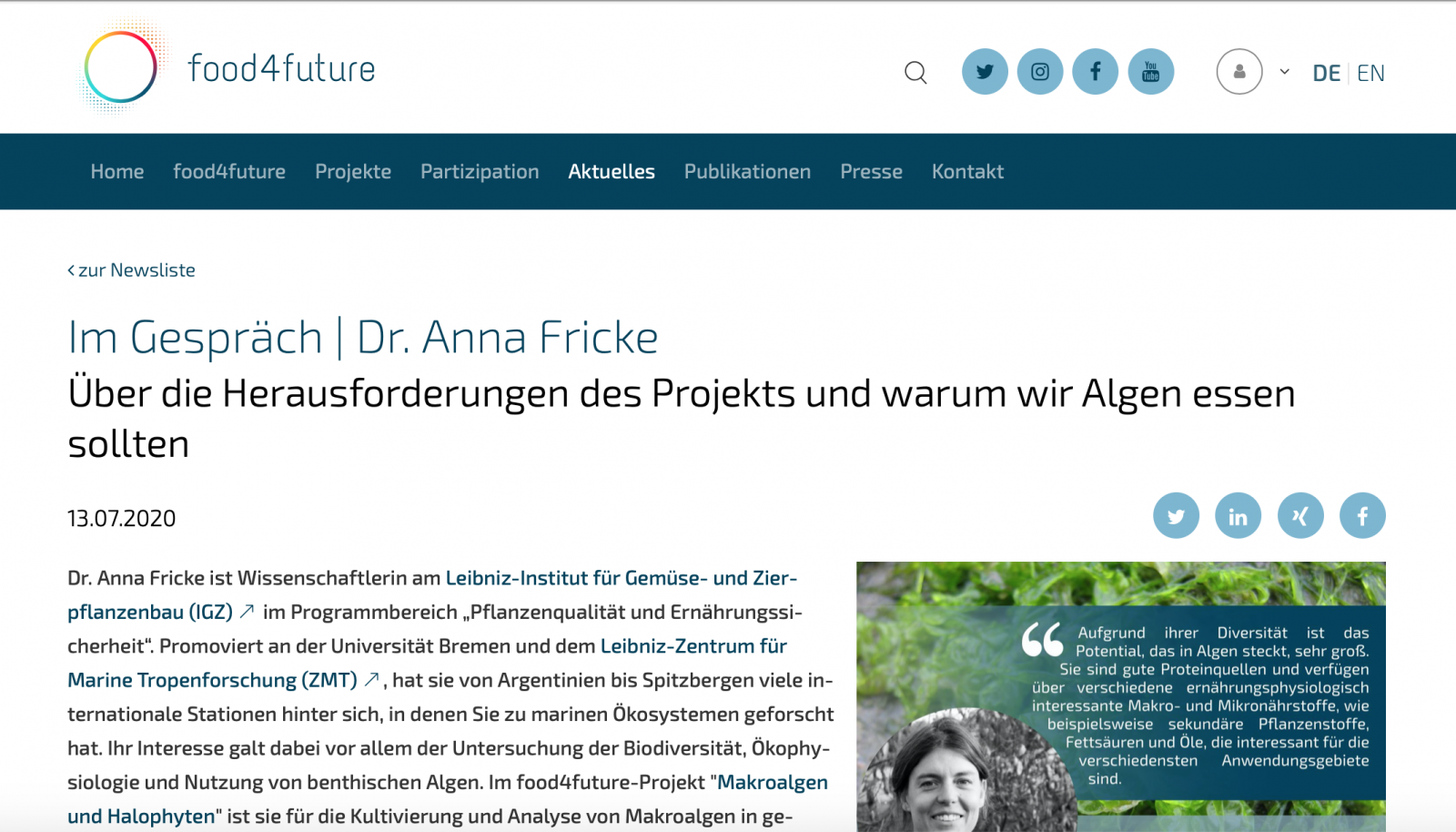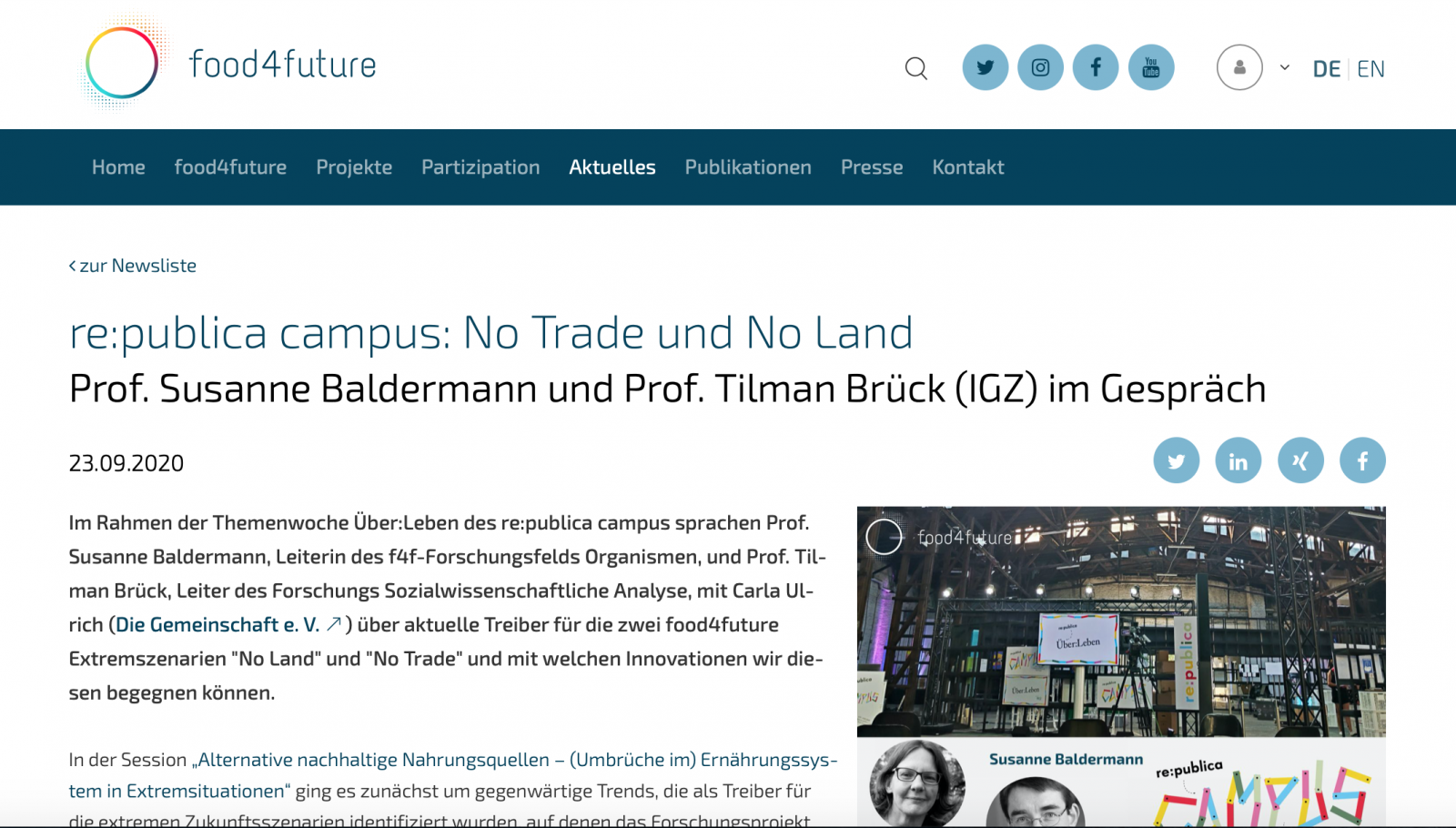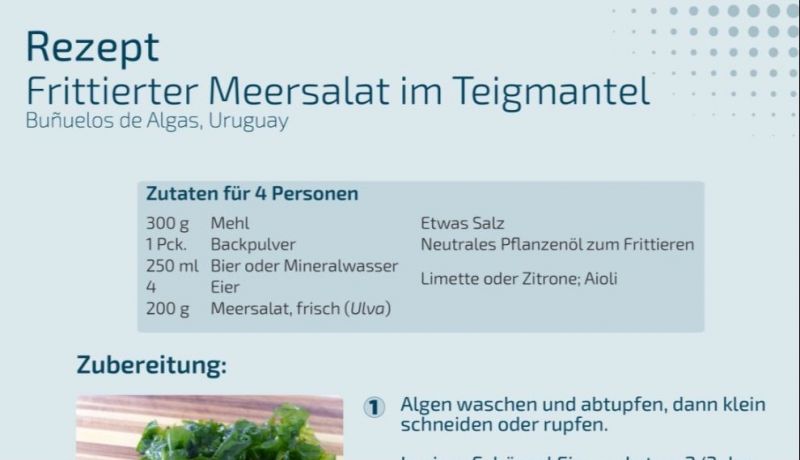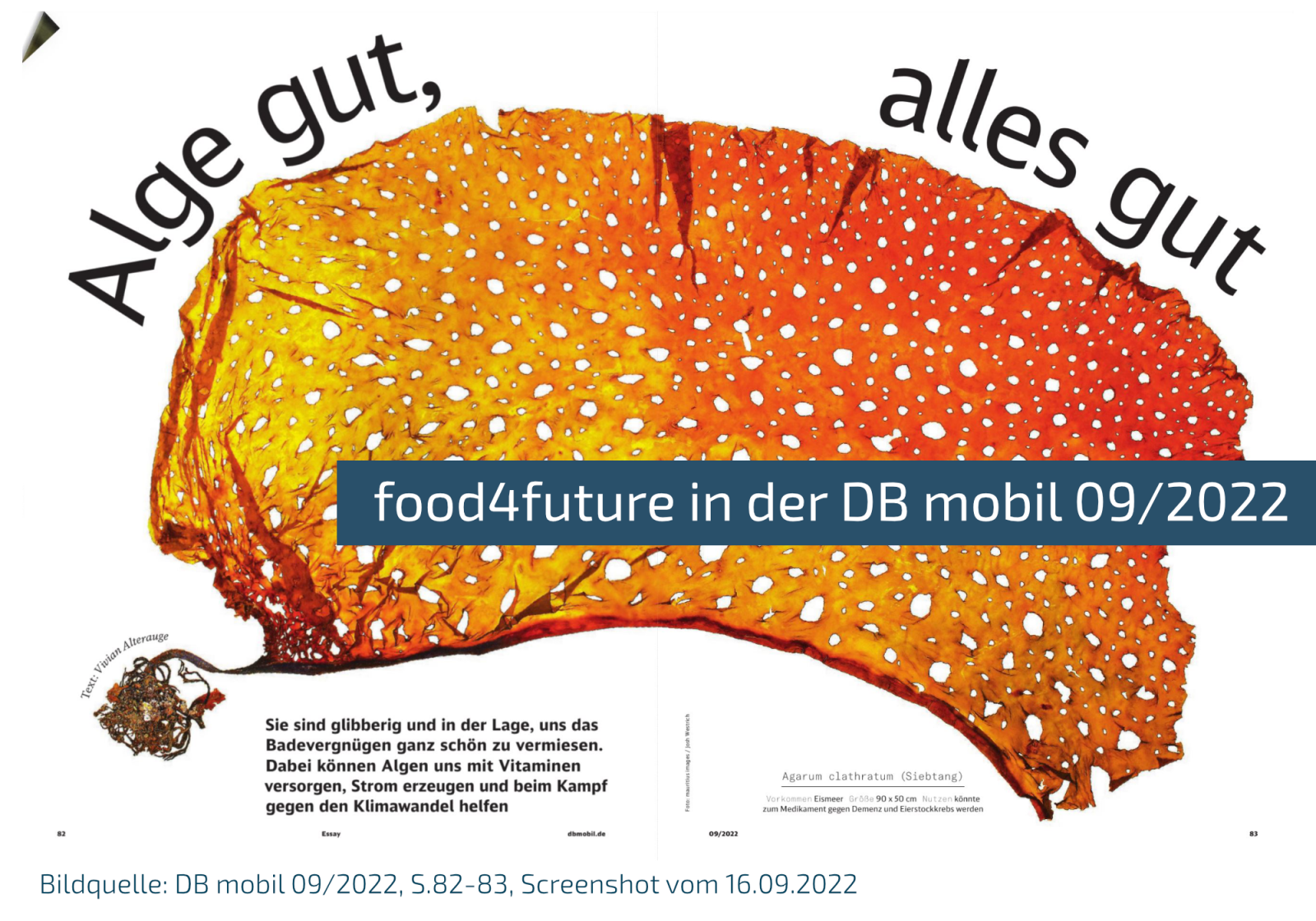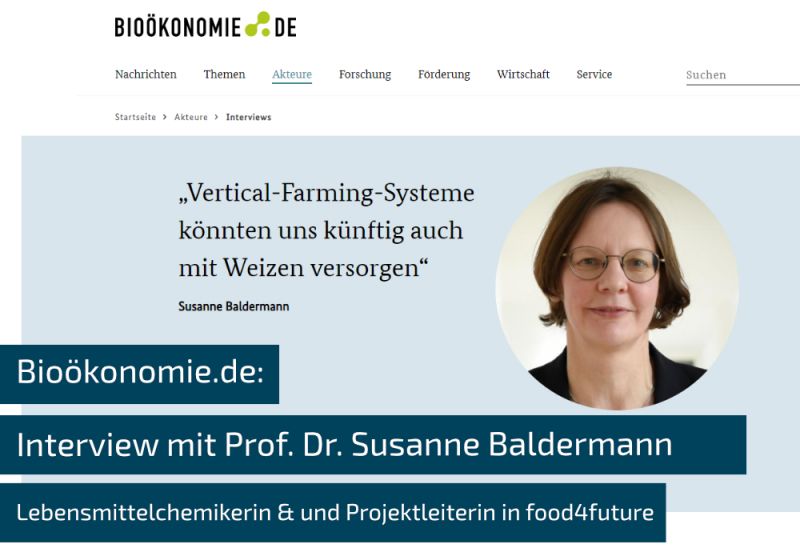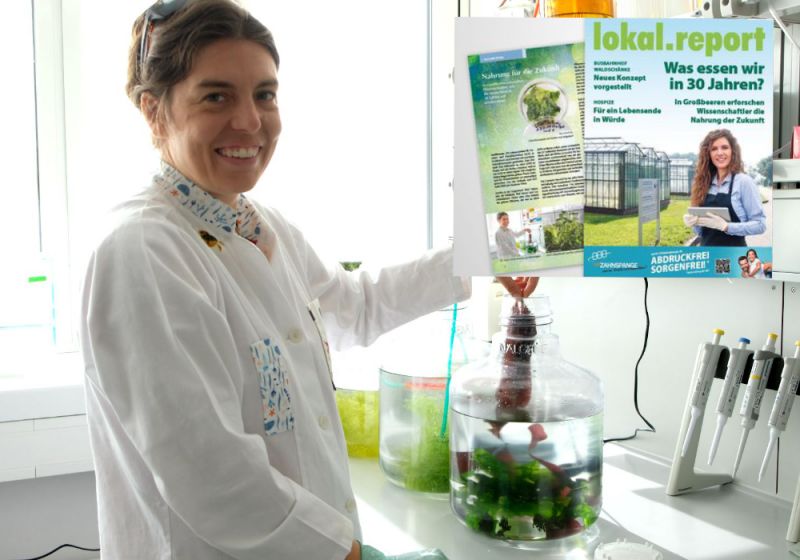Macroalgae are cultivated in barrels like these. (Photo: J. Berend, IGZ)
Macroalgae are a promising resource for the food of the future. They grow quickly, require neither fresh water nor arable land and contain a variety of nutrients such as proteins, vitamins and minerals. In the first funding phase of “food4future”, Ulva compressa and Ulva fenestrata - also known as sea lettuce - were successfully identified as model organisms for urban cultivation. Using innovative bio-based materials with functional integration and the use of regional brine water, for example from the Bad Saarow thermal spa, urban cultivation systems for the sustainable indoor production of saline food organisms such as macroalgae, but also halophytes and jellyfish, were developed for the first time.
The second project funding phase builds on this innovative approach.
The previous laboratory samples and pilot projects will be further scaled up to enable commercial use.The focus is on sustainable materials and resource-conserving processes, including the use of renewable energies to minimize environmental impact.The urban, saline indoor cultivation systems will be scaled up to enable greater biomass and ingredient production. Expanded production facilities with a capacity of up to 2000 liters ensure stable and high-quality macroalgae production. In addition to Ulva species, other promising algae species such as Ceramium virgatum are being investigated for their suitability for production and their nutritional benefits. Research also focuses on optimizing the nutrient profiles and value-adding ingredients by adjusting cultivation conditions such as light intensity, temperature and nutrient composition. Particular attention is being paid to the use of UVB LED technologies, which have already shown positive effects on ingredients such as vitamins and antioxidants.
In line with a circular approach, the f4f project is testing how nutrients can be integrated into macroalgae cultivation not only via purified brine wastewater, but also from other residual material streams such as wastewater from shrimp production or salt mining.
This will not only make macroalgae production more resource-efficient, but also more sustainable. In addition, it is being examined how macroalgae can be integrated into co-cultivation with other organisms such as halophytes or microalgae in order to achieve synergies in nutrient use and CO2 utilization.The biomass obtained and the nutrient richness of macroalgae offer a wide range of possible applications:It can be processed into foods such as bread, pasta or snacks and opens up new ways for the food industry to develop healthy and innovative products. In addition, the bioavailability of macroalgae is being tested in order to maximize nutrient absorption in humans. This is done in close cooperation with food4future partners who specialize in nutritional studies.
Mixed algae community of red, green and brown algae originally from the Heligoland coast. (Photo: A. Fricke, IGZ)
The vision of food4future is clear: macroalgae not only opens up a new, sustainable source of food, but also makes a significant contribution to global food security. Research in the Future Food Living Lab, a real laboratory for innovative agricultural systems, is also supported by digital tools to further optimize the production process. This food4future project lays the foundation for integrating macroalgae into urban systems and firmly establishing them in the consumer-oriented food production of the future.
Text: A. Fricke, IGZ
Contact us
Leibniz-Institut für Gemüse- und Zierpflanzenbau (IGZ)
Theodor-Echtermeyer-Weg 1
14979 Großbeeren
Website
www.igzev.de
Project duration
October 2024 - September 2025
Interaction with f4f & associated partners
ATB, UB, ZMT, DIfE, CUBES Circle, SUSKULT, THW/PYCO; Therme Bad Saarow, Algenland UG, GmbH-IGV, Eklipse, SeaWheat COST Action, EU4Algae
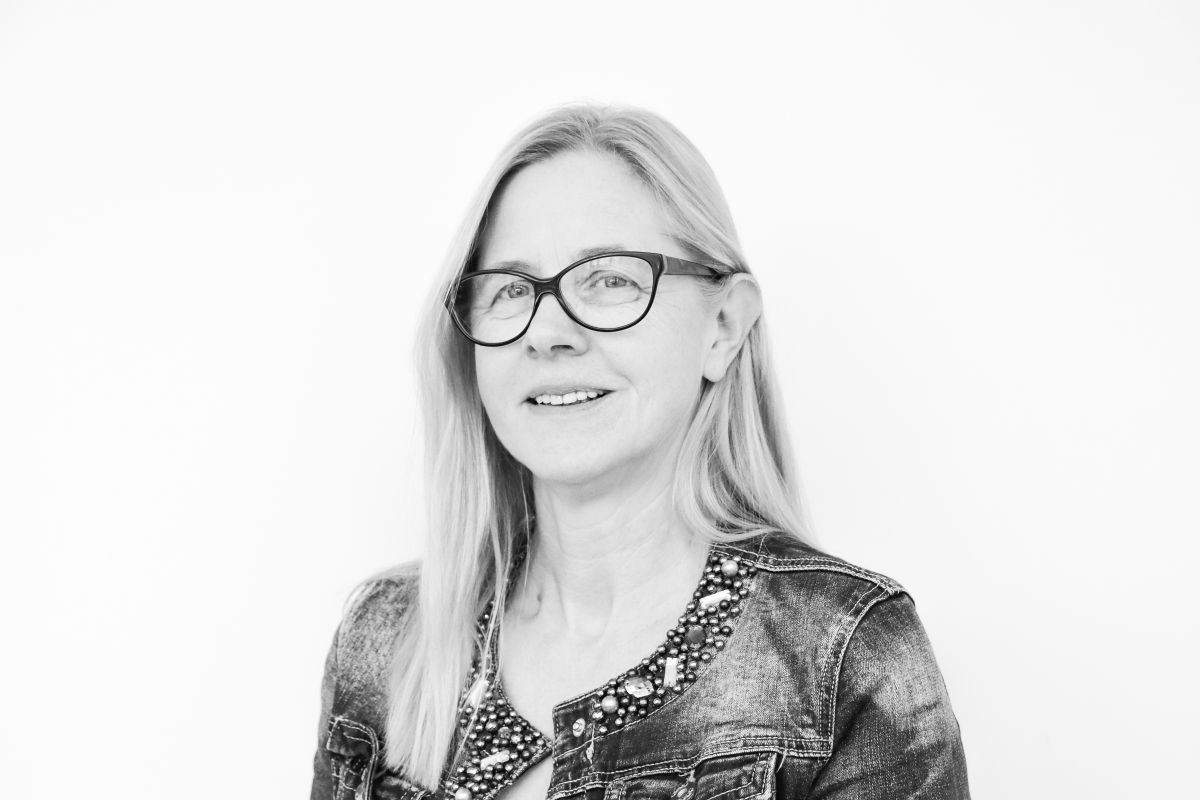
Prof. Dr. Monika Schreiner heads the Plant Quality & Food Security program area at the Leibniz Institute of Vegetable and Ornamental Crops (IGZ) and is an honorary professor at the University of Hanover. She works on the elucidation and manipulation of plant secondary metabolism with the aim of optimizing it for human nutrition. She is coordinator of the food4future consortium and involved in the project “Macroalgae and Halophytes”. She is also the coordinator of the central coordination office of the overarching funding line Agricultural Systems of the Future.
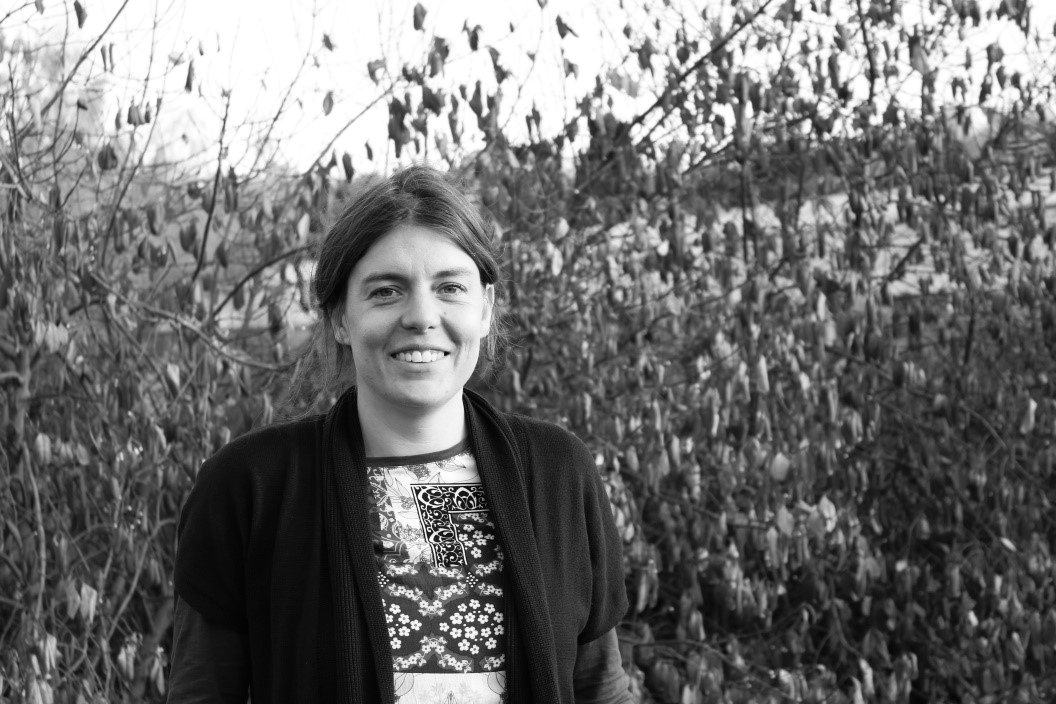
Dr. Anna Fricke is a scientist in the program area “Plant Quality and Food Security” at the Leibniz Institute of Vegetable and Ornamental Crops (IGZ). She is interested in studying the biodiversity, physioecology and utilization of benthic algae. In the food4future project “Macroalgae and Halophytes”, she is responsible for the cultivation and investigation of further potential applications of macroalgae in the food sector.
Fricke A, Harbart V, Schreiner M, Baldermann S. (2023). A proof of concept for inland production of the “sea-vegetable” Ulva compressa in Brandenburg (Central Europe) using regional saline groundwater. (Algal Research).
doi10.1016/j.algal.2023.103226
Fitzner M, Schreiner M and Baldermann S. (2023) Comprehensive Characterization of selected phytochemicals and minerals of selected edible halophytes grown in saline indoor farming for future food production. Journal of Food Composition and Analysis
doi:10.1016/j.jfca.2023.105435
Fitzner M, Schreiner M, Baldermann S. (2023) The interaction of salinity and light regime modulates photosynthetic pigment content in edible halophytes in greenhouse and indoor farming. Frontiers in Plant Science.
doi:10.3389/fpls.2023.1105162
Fricke A., Psarianos M., Sabban J., Fitzner M., Reipsch R., Schlüter O.K., Dreyer C., Vogt J.H-M., Schreiner M. and Baldermann S. (2022) "Composite materials for innovative urban farming of alternative food sources (macroalgae and crickets). (Front. Sustain. Food Syst.)
doi:10.3389/fsufs.2022.1001769
Psarianos M., Fricke A., Ojha S., Baldermann S., Schreiner M., Schlüter O.K. (2022) Effect of Narrowband UV-B Irradiation on the Growth Performance of House Crickets (Foods)
doi.org:10.3390/foods11213487
Wikandari R., Manikharda, Baldermann S., Ningrum A. & Taherzadeh M. J (2021) Application of cell culture technology and genetic engineering for production of future foods and crop improvement to strengthen food security, Bioengineered, 12:2, 11305-11330,
doi:10.1080/21655979.2021.2003665
Fitzner M, Fricke A, Schreiner M, Baldermann S. (2021) Utilization of Regional Natural Brines for the Indoor Cultivation of Salicornia europaea. Sustainability. 13(21):12105.
doi:10.3390/su132112105
Bermejo R, Buschmann A, Capuzzo E, Cottier-Cook E, Fricke A, Hernández I, Hofman LC, Rereira R, van den Burg S, Grace M, Mukherjee N, Wendling L. (2022) Report: Macoralage cultivation and ecosystem services. Eklipse Expert Working Group Macroalgae.
Finaler Report (PDF)
